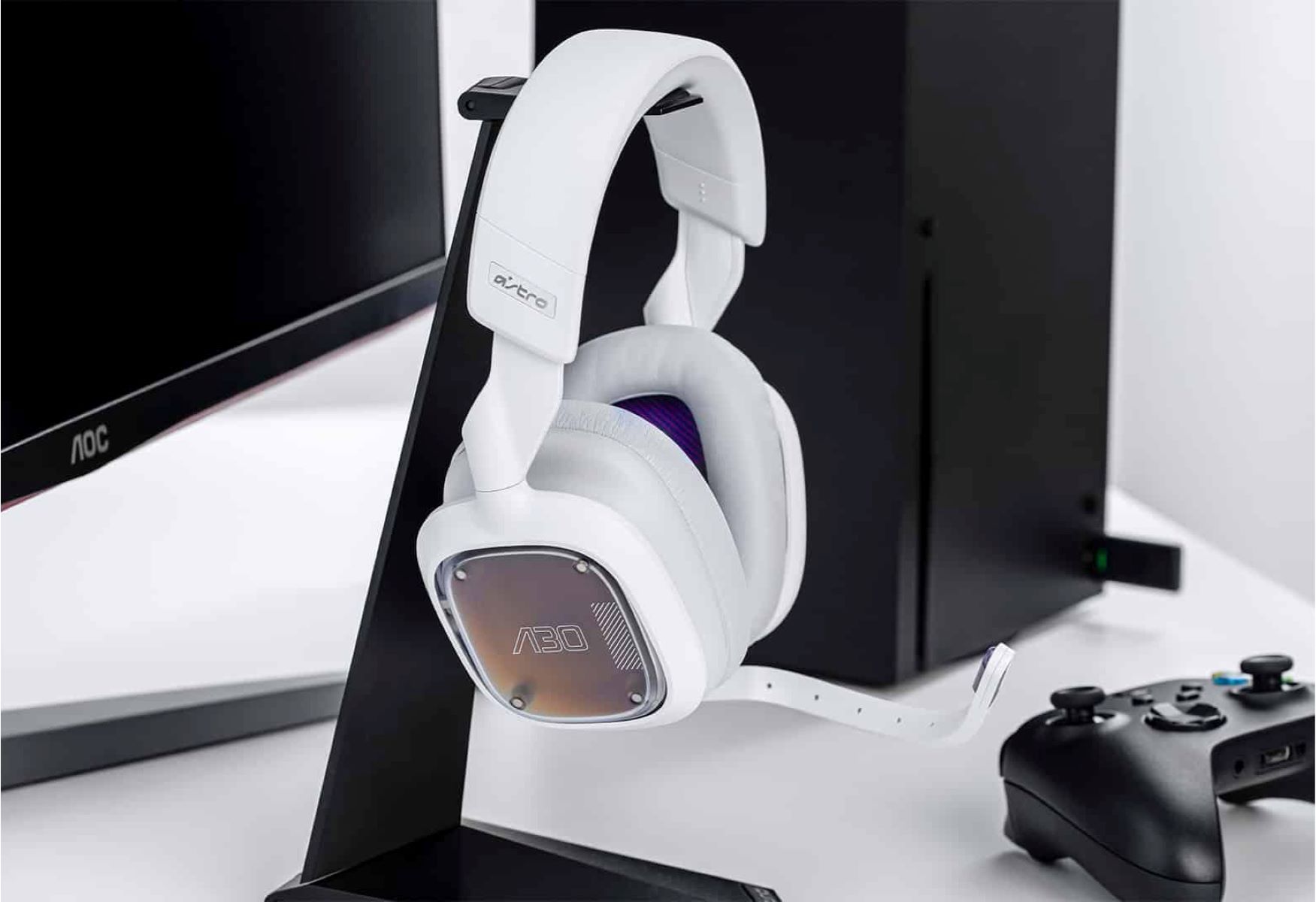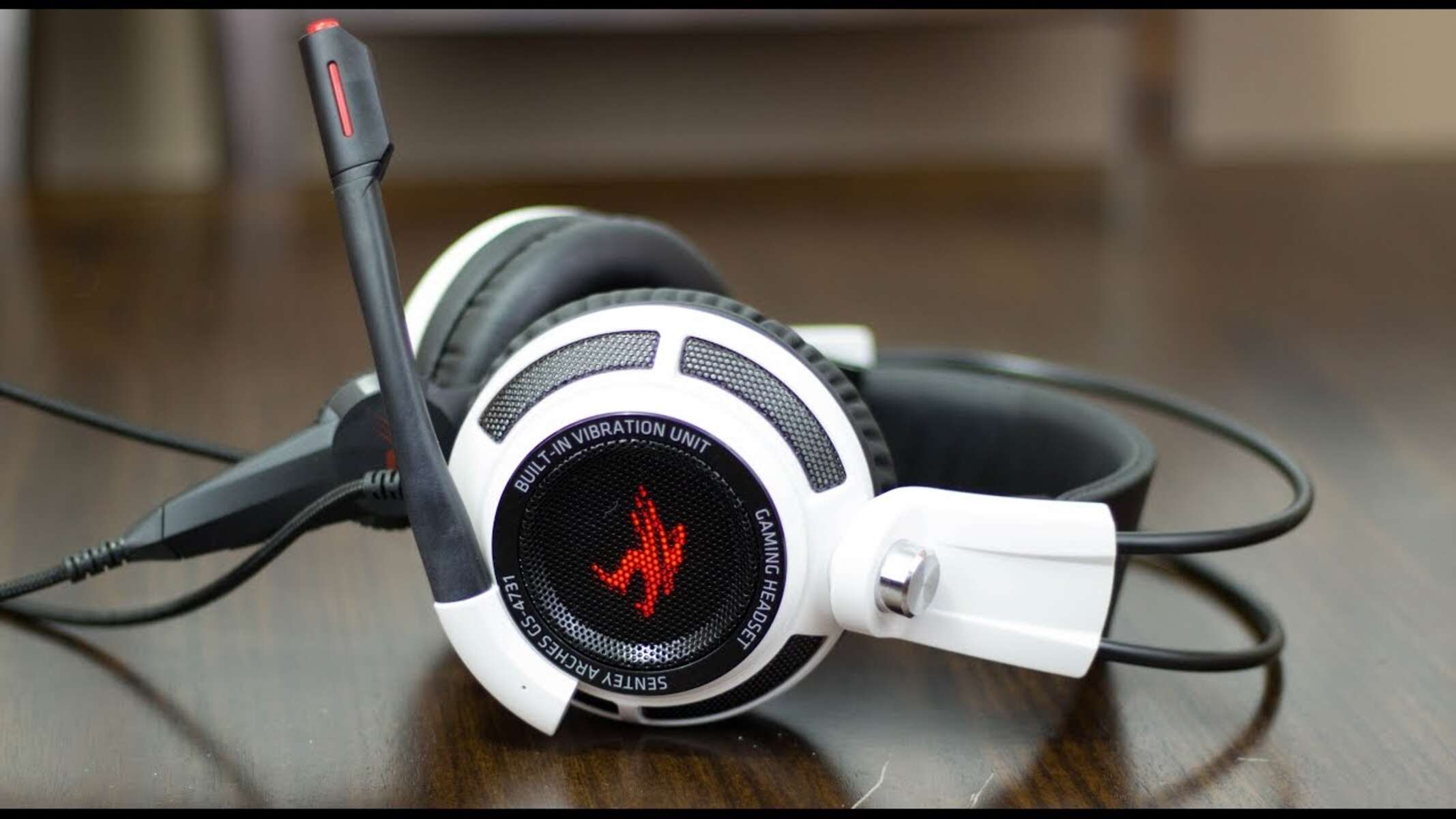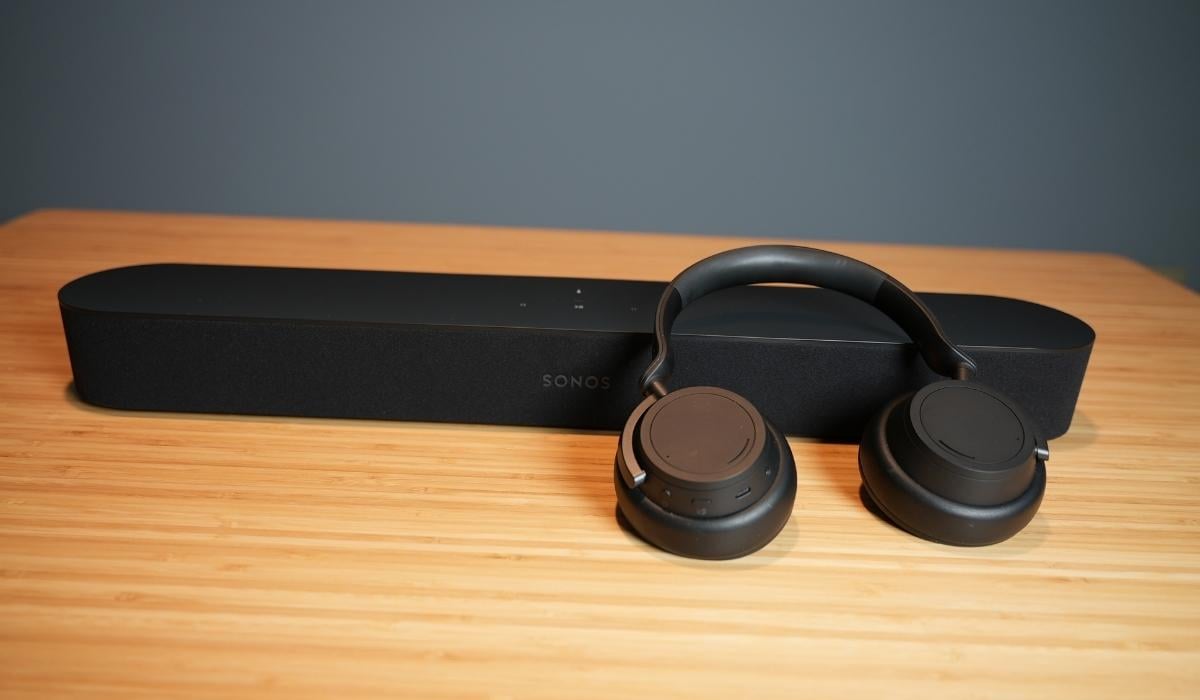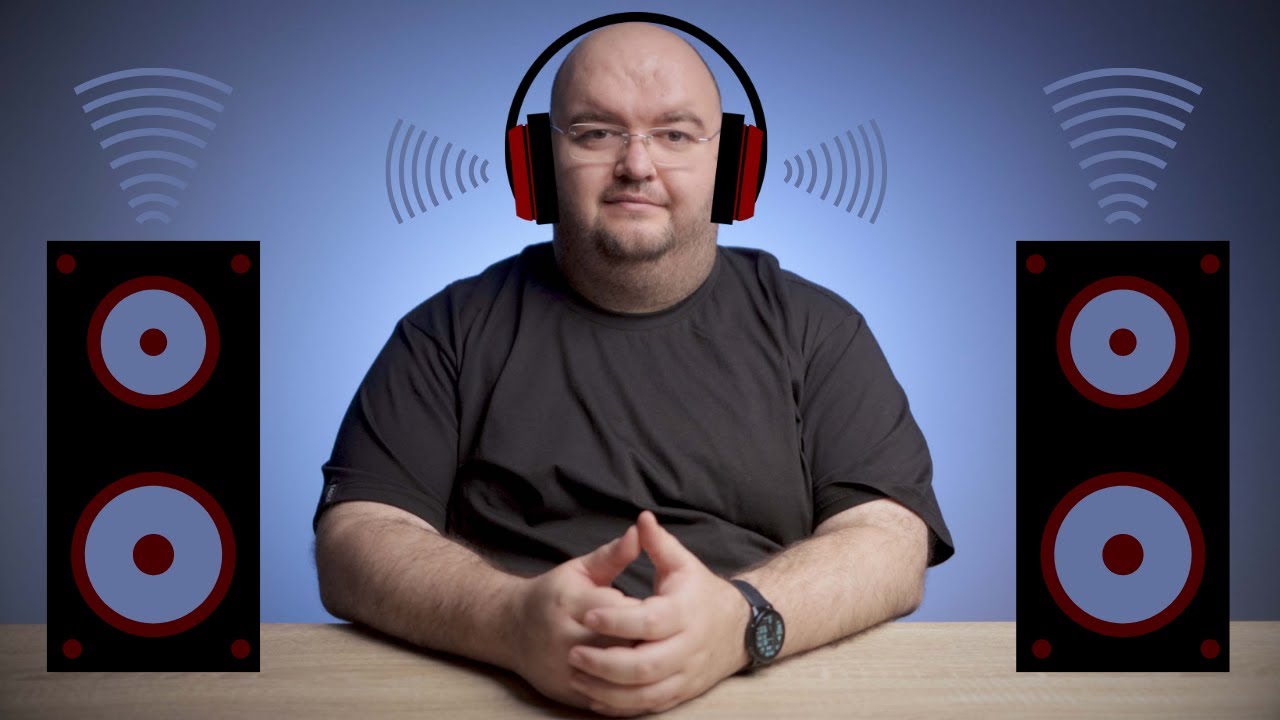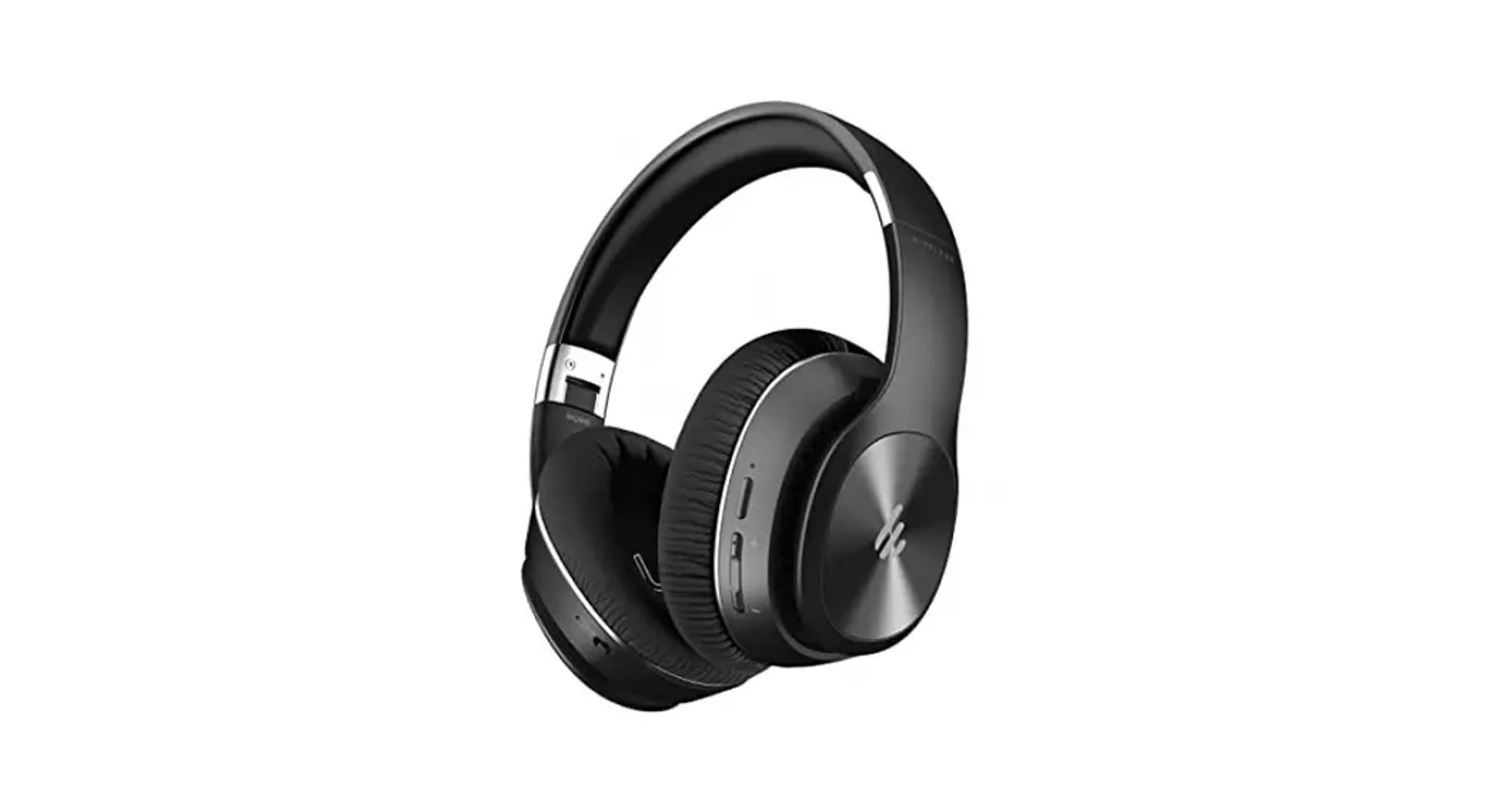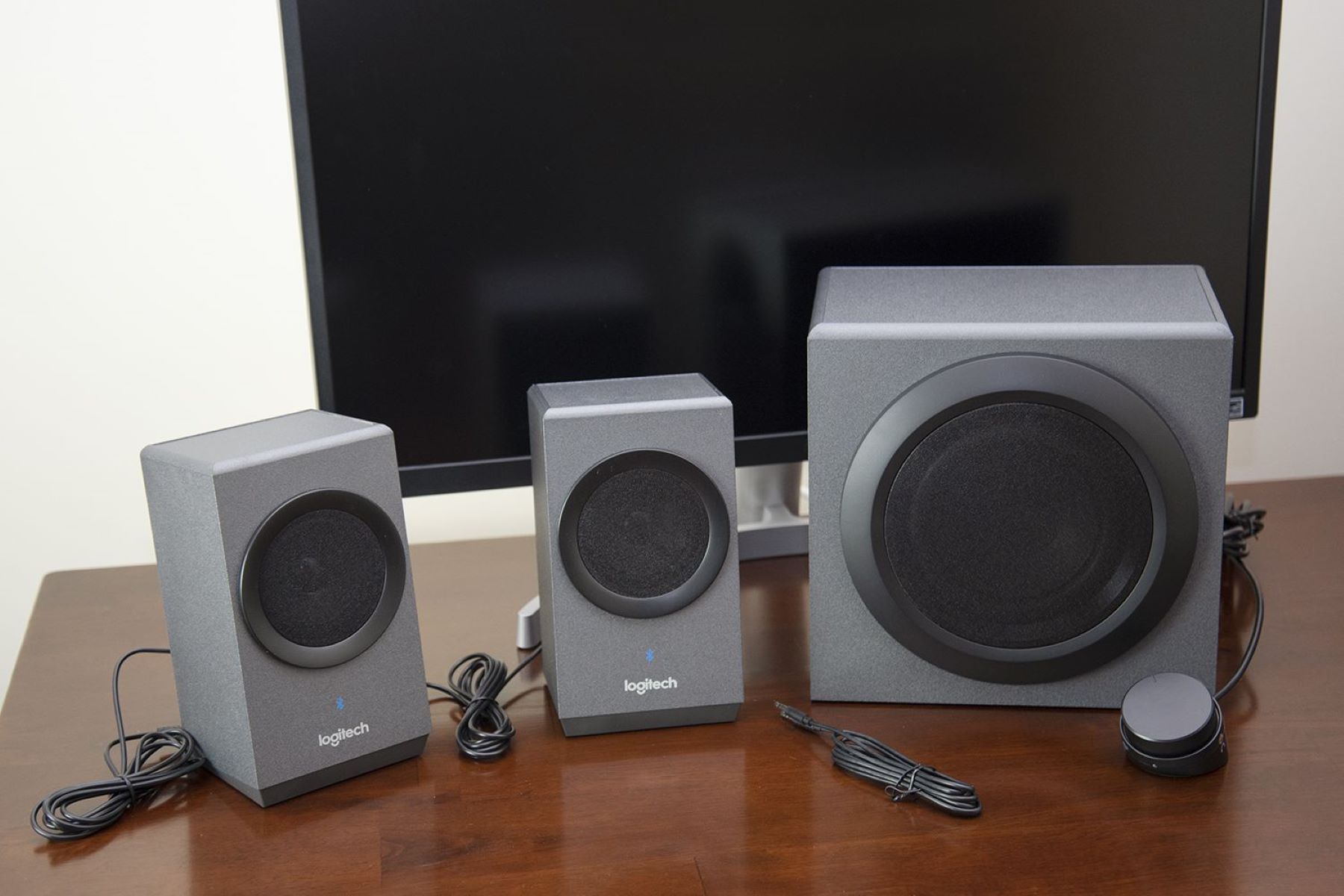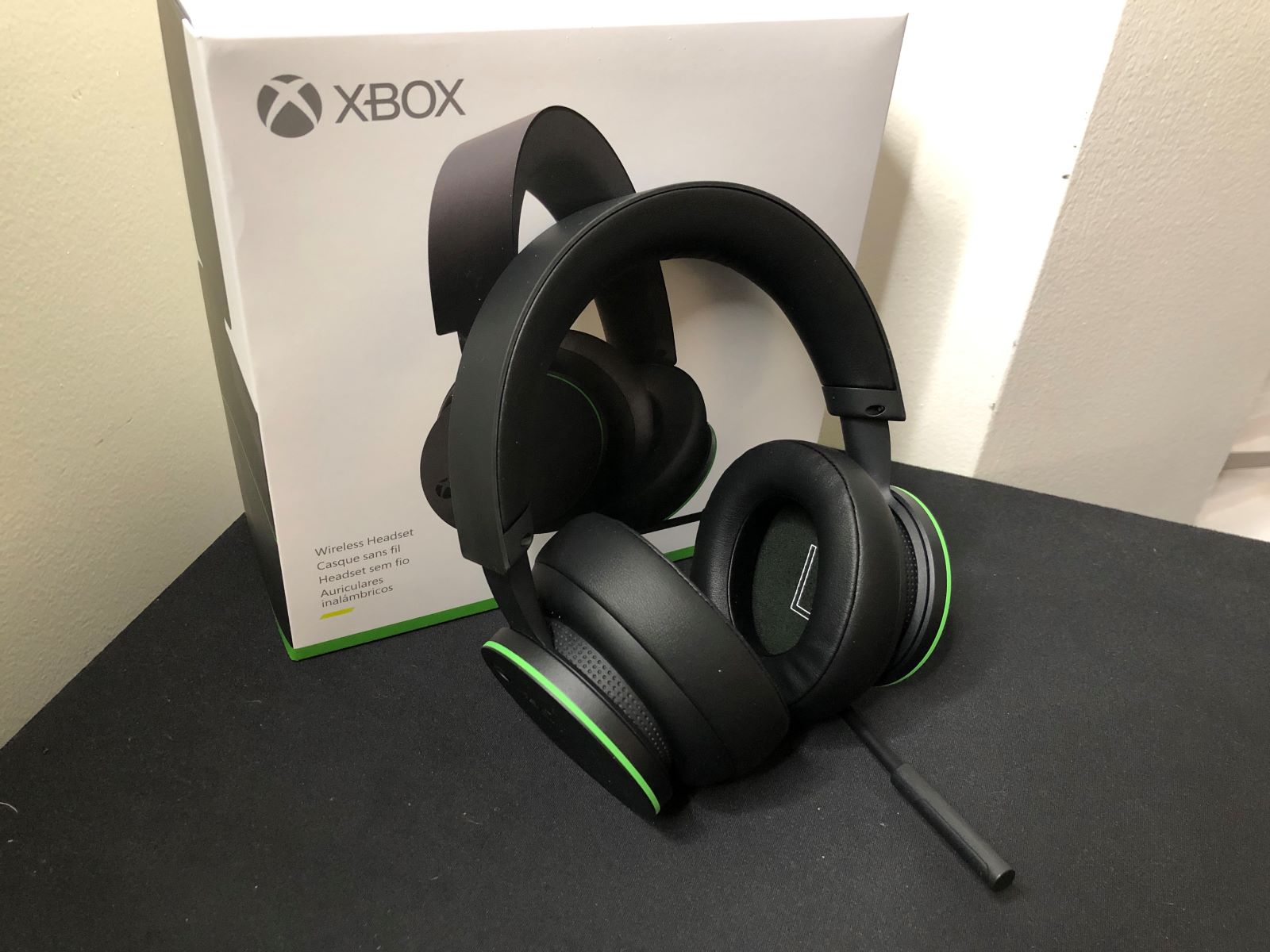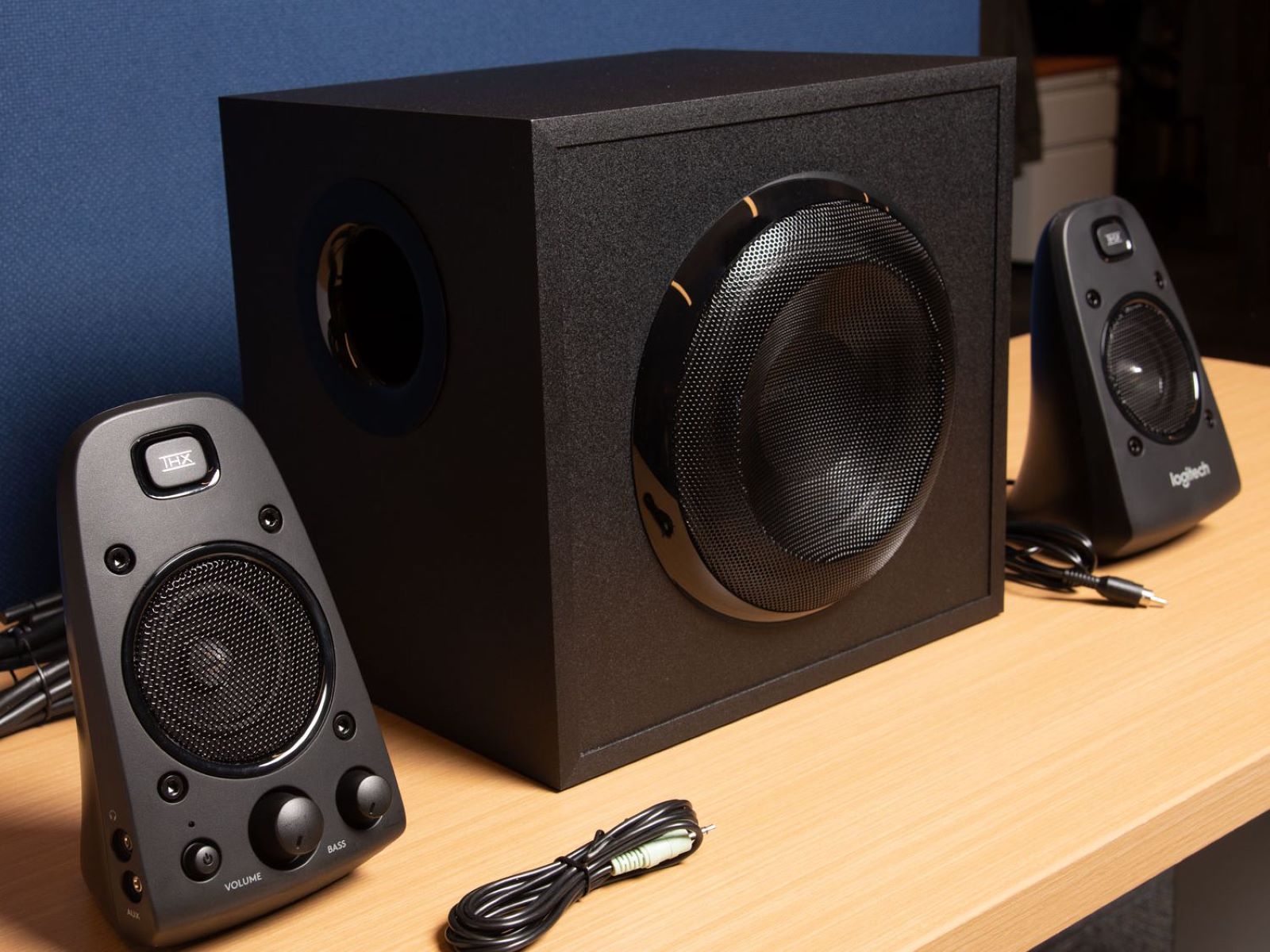Introduction
In the modern era, where technology seamlessly integrates into our daily lives, the use of gadgets has become ubiquitous. Among these gadgets, USB headsets and speakers play a pivotal role in enhancing our auditory experiences. Whether it's for work, entertainment, or communication, these devices offer unparalleled audio quality and convenience.
The ability to switch between a USB headset and speakers provides users with a newfound level of audio flexibility. This functionality allows for a seamless transition between private listening and sharing audio with others. Whether you're engrossed in a virtual meeting, enjoying your favorite tunes, or watching a captivating movie, the ability to effortlessly switch between these devices enhances the overall audio experience.
Understanding the nuances of USB headsets and speakers, including their distinct features and benefits, is essential for harnessing the full potential of these audio devices. Moreover, knowing how to effectively switch between them can significantly enhance productivity and enjoyment in various settings, whether it's during work hours or leisure time.
As we delve into the intricacies of USB headsets and speakers, we'll explore the benefits of seamlessly transitioning between these devices and provide practical insights on how to make the switch effortlessly. By the end of this article, you'll have gained valuable knowledge on maximizing the potential of your audio setup, allowing for a more immersive and flexible audio experience.
Understanding USB Headsets and Speakers
USB headsets and speakers are essential components of modern audio setups, offering distinct functionalities and benefits. Understanding the unique characteristics of these devices is crucial for optimizing their usage and seamlessly transitioning between them.
USB Headsets
USB headsets are audio devices that integrate headphones and a microphone into a single unit, connected to a computer or other compatible devices via a USB port. These headsets are designed to provide users with a convenient and immersive audio experience, making them ideal for various applications such as virtual meetings, gaming, and multimedia consumption.
One of the key advantages of USB headsets is their plug-and-play functionality, eliminating the need for additional audio ports or complex setup procedures. This feature makes them incredibly user-friendly and versatile, allowing for quick and hassle-free connectivity.
Furthermore, USB headsets often incorporate advanced audio technologies, such as noise cancellation and surround sound, to deliver crystal-clear audio and an immersive listening experience. The inclusion of a built-in microphone enables seamless communication, making USB headsets a popular choice for professional calls, online gaming, and voice commands.
Speakers
On the other hand, speakers serve as a primary audio output device, delivering sound to a broader audience or creating an ambient audio environment. USB speakers, in particular, offer a convenient and portable solution for enhancing audio playback from computers and other compatible devices.
USB speakers are designed to be easily connectable, requiring only a USB port for power and audio transmission. This simplicity allows users to enjoy high-quality audio without the need for additional power adapters or complex wiring.
Moreover, USB speakers come in various configurations, ranging from compact, portable units to larger, high-fidelity systems, catering to diverse audio preferences and spatial requirements. These speakers often feature advanced sound optimization technologies, ensuring rich and immersive audio reproduction across different genres and media formats.
Understanding the unique attributes of USB headsets and speakers is essential for harnessing their full potential. By recognizing the distinct functionalities and benefits of these audio devices, users can make informed decisions when transitioning between private listening with a USB headset and sharing audio through USB speakers, ultimately enhancing their overall audio experience.
Benefits of Switching Between USB Headset and Speakers
Switching between a USB headset and speakers offers a myriad of benefits that cater to diverse audio needs and preferences. This seamless transition between private listening and shared audio playback enhances the overall audio experience in various settings. Here are the key advantages of leveraging the flexibility to switch between USB headsets and speakers:
-
Versatility and Adaptability: The ability to switch between a USB headset and speakers provides unparalleled versatility, allowing users to adapt to different audio scenarios. Whether it's transitioning from a private video conference to a collaborative presentation or seamlessly switching from immersive gaming with a headset to enjoying music through speakers, this flexibility caters to a wide range of audio preferences and requirements.
-
Enhanced Privacy and Immersion: Switching to a USB headset offers a heightened sense of privacy and immersion, particularly in environments where ambient noise or distractions are prevalent. By donning a headset, users can fully immerse themselves in the audio content without disturbing others, fostering a more focused and personalized listening experience.
-
Collaborative Audio Sharing: On the other hand, transitioning to USB speakers facilitates collaborative audio sharing, allowing multiple individuals to enjoy the audio content simultaneously. This is particularly beneficial in group settings, such as office meetings, movie nights, or casual gatherings, where the shared audio experience enhances engagement and inclusivity.
-
Seamless Transition: The ability to seamlessly switch between a USB headset and speakers eliminates the need for complex setup procedures, ensuring a smooth transition between private and shared audio playback. This convenience saves time and effort, enabling users to effortlessly adapt to changing audio requirements without disruptions or technical challenges.
-
Customized Audio Experience: Leveraging the flexibility to switch between USB headsets and speakers enables users to customize their audio experience based on their preferences and the specific demands of each situation. Whether it's adjusting the audio output for personal enjoyment or optimizing it for group dynamics, this adaptability empowers users to tailor the audio environment to their liking.
-
Optimized Communication: Switching to a USB headset with a built-in microphone enhances communication clarity, particularly in professional or collaborative settings. The integrated microphone facilitates clear and direct communication, ensuring that voice commands, virtual meetings, and online interactions are conducted with precision and effectiveness.
-
Enhanced Productivity and Engagement: By seamlessly transitioning between USB headsets and speakers, users can optimize their audio setup to enhance productivity and engagement. Whether it's for focused work tasks, immersive entertainment, or interactive discussions, the ability to switch between these devices fosters an environment conducive to enhanced productivity and enriched audio experiences.
The benefits of switching between USB headsets and speakers underscore the significance of audio flexibility in modern technological landscapes. By harnessing the versatility and adaptability offered by these devices, users can elevate their audio experiences, whether it's for work, entertainment, or communication, ultimately enhancing their overall audio journey.
How to Switch Between USB Headset and Speakers
Switching between a USB headset and speakers involves a straightforward process that empowers users to seamlessly transition between private listening and shared audio playback. Whether it's for professional meetings, immersive gaming sessions, or casual entertainment, understanding how to effectively switch between these devices is essential for optimizing the audio experience. Here's a comprehensive guide on how to effortlessly transition between a USB headset and speakers:
Step 1: Connecting the USB Headset
- Plug and Play: Begin by connecting the USB headset to an available USB port on your computer or compatible device. USB headsets are designed for plug-and-play functionality, eliminating the need for complex setup procedures.
Step 2: Configuring Audio Output
-
Access Sound Settings: Once the USB headset is connected, access the sound settings on your computer. This can usually be done through the system preferences or control panel, depending on the operating system.
-
Selecting the USB Headset: Within the sound settings, locate the audio output section and select the USB headset as the default playback device. This ensures that audio output is directed to the headset for private listening.
Step 3: Transitioning to USB Speakers
-
Disconnecting the USB Headset: When transitioning to USB speakers for shared audio playback, simply disconnect the USB headset from the USB port. This action automatically prompts the system to redirect audio output to the default speakers.
-
Configuring Audio Output for Speakers: If necessary, access the sound settings again to ensure that the USB speakers are selected as the default playback device. This enables seamless transition to shared audio playback through the speakers.
Step 4: Enjoying Shared Audio Playback
- Immersive Audio Experience: With the USB speakers configured as the default playback device, users can enjoy shared audio playback with an immersive and encompassing sound experience. Whether it's for group presentations, movie screenings, or casual music listening, the speakers deliver high-quality audio to a broader audience.
Step 5: Transitioning Back to the USB Headset
- Reconnecting the USB Headset: To switch back to private listening with the USB headset, simply reconnect the headset to the USB port. The system automatically recognizes the headset as the default playback device, enabling users to seamlessly transition to private audio enjoyment.
By following these simple steps, users can effortlessly switch between a USB headset and speakers, catering to diverse audio needs and preferences. This flexibility empowers individuals to adapt to various audio scenarios, whether it's for personal immersion or shared engagement, ultimately enhancing the overall audio experience.
Tips for Seamless Transition
Ensuring a seamless transition between a USB headset and speakers involves strategic considerations and practical tips to optimize the audio experience. By implementing the following tips, users can effortlessly switch between these devices, enhancing the overall audio journey.
1. Quick Access Controls
Familiarize yourself with quick access controls or keyboard shortcuts for adjusting audio output devices. Many operating systems offer convenient shortcuts to switch between playback devices, enabling swift transitions without navigating through complex settings.
2. Customized Device Naming
Assign customized names to your USB headset and speakers within the audio settings. This personalized labeling simplifies the selection process when switching between devices, reducing the likelihood of selecting the wrong playback device.
3. Pre-Configured Profiles
Explore the option to create pre-configured audio profiles tailored to specific scenarios, such as "Private Listening" and "Shared Playback." These profiles can store preferred audio settings for each device, streamlining the transition process with a single click.
4. Dedicated USB Ports
Allocate dedicated USB ports for your headset and speakers to minimize the need for frequent unplugging and re-plugging. This setup ensures that each device maintains its connection, facilitating a smoother transition between private and shared audio playback.
5. Audio Routing Software
Consider utilizing audio routing software that allows for advanced control over audio outputs. These applications enable users to create custom routing configurations, directing audio to different devices with precision and flexibility.
6. Visual Indicators
Implement visual indicators, such as LED lights or on-screen notifications, to signify the active audio output device. Clear visual cues help users quickly identify the current playback device, reducing confusion during the transition process.
7. Test Transitions
Regularly test transitions between the USB headset and speakers to ensure seamless functionality. Performing trial switches allows users to identify any potential issues or inconsistencies, enabling proactive troubleshooting and refinement of the transition process.
8. Device Compatibility Checks
Verify the compatibility of your USB headset and speakers with the operating system and audio hardware. Ensuring compatibility minimizes the likelihood of technical conflicts or audio routing errors when switching between devices.
9. Firmware and Driver Updates
Stay proactive in updating firmware and drivers for your USB headset and speakers. Keeping the devices' software up to date enhances compatibility and stability, contributing to a smoother transition between audio playback devices.
By incorporating these tips into your audio setup and transition process, you can optimize the flexibility and adaptability of switching between a USB headset and speakers. These practical strategies empower users to seamlessly tailor their audio experience to diverse scenarios, whether it's for private immersion or shared engagement, ultimately enhancing the overall audio journey.
Conclusion
In conclusion, the ability to seamlessly switch between a USB headset and speakers offers unparalleled audio flexibility, catering to diverse needs and preferences in various settings. By understanding the distinct functionalities and benefits of these devices, users can harness the full potential of their audio setup, whether it's for professional endeavors, immersive entertainment, or collaborative engagements.
The versatility and adaptability provided by the ability to switch between a USB headset and speakers empower individuals to tailor their audio experience to specific scenarios. Whether it's transitioning from private listening during virtual meetings to shared audio playback for group presentations, this flexibility enhances productivity and engagement, ultimately enriching the overall audio journey.
Furthermore, the seamless transition between private and shared audio playback fosters enhanced privacy, immersion, and inclusivity. Users can fully immerse themselves in audio content through a USB headset without disturbing others, while also facilitating collaborative audio sharing through USB speakers in group settings. This dynamic functionality underscores the significance of audio flexibility in modern technological landscapes, catering to the diverse audio needs of users.
By following the comprehensive guide on how to switch between a USB headset and speakers, users can effortlessly adapt to changing audio requirements, optimizing their audio setup for various scenarios. The practical tips for seamless transition further enhance the user experience, ensuring that the transition process is streamlined and intuitive.
Ultimately, the ability to seamlessly switch between a USB headset and speakers empowers users to customize their audio environment, whether it's for personal enjoyment, professional communication, or shared engagement. This adaptability underscores the pivotal role of audio devices in enhancing productivity, entertainment, and collaboration, ultimately elevating the overall audio experience.
As technology continues to evolve, the seamless integration of audio devices and the flexibility to transition between them will play a pivotal role in shaping immersive and dynamic audio experiences. By embracing the potential of USB headsets and speakers and leveraging the ability to switch between them, users can embark on a journey of audio versatility, productivity, and enjoyment, enriching their daily interactions with audio content.









